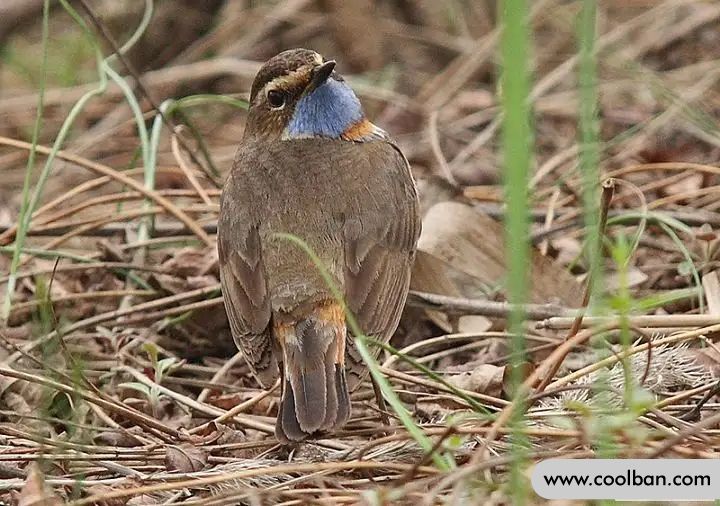How to feed blue robins?
Blue-throated robins prefer to perch in bushes or reeds. Timid, often running short distances underground, pausing for a moment, twisting or spreading tail feathers from time to time. The blue-throated robin is mainly found in most of China, as well as Europe, North Africa, Russia, western Alaska, Central Asia, Iran, India and Southeast Asia.
Morphological characteristics of blue-throated robins
The body length of an adult blue-throated robin is about 13cm, the ideal weight should be about 18g, and the body size is similar to that of a sparrow. Their calls are very pleasant, and the male and female blue-throated robins have slightly different colors. The specific functions are described below.
Blue-throated robin males have earthy brown upper body plumage with darker top feathers, a white brow line, a bright blue chin and throat, a maroon patch in the center, and black stripes and light maroon below the chest. The road is wide, the belly is white, and the flanks and tail coverts are brownish-white. Tail feathers dark brown, base chestnut red.
The female is similar to the male, but the chin and throat are brownish-white, the throat has no chestnut patches, the throat is white without orange-blue, and the thin black cheek stripes are connected to the sternum composed of black spots, which is red with the female. Throat robins and black-breasted robins have different markings on their tails.
The coverts on the wings of young birds have light chestnut spots and light spots, the iris is dark brown, the bill is black, and the feet are brown.

Blue-throated robin breeding environment
Because blue-throated robins are lively and active. So take some time every day to walk the birds, get some fresh air, and get some sunshine. When feeding the bird for the first time, the bird should be acclimated in a plate cage first, and it is best to tie the flight feathers with a thread to reduce flight collisions and save physical strength.
In summer, domesticated ones should often get their own water baths, which can be done once a day. The number of water baths should be reduced in winter. Be careful not to blow directly after bathing. The temperature of the bath water should be between 25°C to between 35°C.
If it is raised in a large cage, it must be acclimated on a plate cage, and then put into a larger medium cage (100 cm long, 60 cm wide and 70 cm high) for a period of time. If they are healthy, they can be placed in a large cage. A large cage 2 meters high, 4 meters long and 3 meters wide can hold about 30 animals. The top of the cage should have 1/3 shelter from rainwater and many lower perches should be set up. Blue-throated robins are afraid of the cold. When the temperature is lower than 0 ℃ in winter, it should be raised indoors. The bird cage should be placed in a sunny place indoors, and should be hung in a sheltered place outdoors.

Tips for raising blue-throated robins
The blue-throated robin is a typical omnivorous bird and does not usually choose food, but as a pet bird, the diversification of food will be more conducive to the growth of the blue-throated robin, especially during the moulting period. feed. In summer, pay attention to feeding the powder with the ingredients to keep it fresh and prevent deterioration.
In the wild, blue-throated robins mainly feed on beetles, bed bugs, locusts, Lepidoptera, Coleoptera and other insects and insect larvae, especially Lepidoptera larvae, and also eat plant seeds.
Since the blue-throated robin has just entered its new environment, the food should be made into a thin paste with a few mealworms or corn borer larvae on it, and no water should be given. Let the birds eat the worms in the food jars in the cage when they are hungry, and eat the thin food at the same time, then increase the viscosity of the food until the transition to eating the powdered food. Or feed with small insects, 4 times a day, 2 to 3 small insects each time. When feeding, be gentle to avoid damage. You can eat your own food and put it in a bird cage, supply clean water, and change it once a day. 50% corn flour, 20% mung bean flour, 20% cooked egg yolk, light fish meal or 10% silkworm chrysalis powder.
